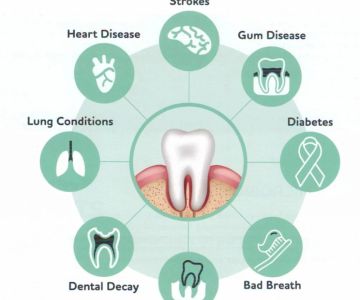Comparing Oral and IV Antibiotics for Lyme Disease Treatment
Lyme disease is a tick-borne illness that has become a significant health concern in many parts of the United States. Caused by the bacterium Borrelia burgdorferi, Lyme disease presents challenges in diagnosis and treatment. A critical question among patients and healthcare providers alike is whether oral antibiotics or intravenous (IV) antibiotics offer more effective treatment, especially in varied stages of the disease.
1. Understanding Lyme Disease and Its Progression
Lyme disease begins with early localized infection, typically presenting as a distinctive rash called erythema migrans, accompanied by flu-like symptoms. If untreated, the infection can progress to early disseminated and late stages, potentially affecting the joints, nervous system, and heart. The choice of antibiotic treatment often depends on the stage and severity of the disease.
2. Oral Antibiotics: The Frontline Treatment
For early-stage Lyme disease, oral antibiotics such as doxycycline, amoxicillin, or cefuroxime axetil are the standard first-line treatments. These medications are generally effective, well-tolerated, and easier for patients to take without hospitalization. According to clinical guidelines, a 14- to 21-day course of oral antibiotics typically clears the infection in most patients at this stage.
Oral antibiotics also reduce the risk of complications associated with intravenous therapy, such as infections from catheters and the need for medical supervision. Moreover, their accessibility and cost-effectiveness make them preferable for many patients.
3. When IV Antibiotics Are Recommended
Intravenous antibiotics, usually administered in a hospital or specialized clinic setting, are reserved for more severe or complicated cases of Lyme disease. These cases might include patients with Lyme meningitis, severe carditis, or persistent neurological symptoms where oral antibiotics may not reach sufficient concentrations in the affected tissues.
IV antibiotics like ceftriaxone are typically administered over a 14- to 28-day period, and while effective, they require close monitoring due to potential side effects and risks linked to IV catheter use.
4. Scientific Evidence and Comparative Studies
Multiple studies comparing oral and IV antibiotic therapies show that oral antibiotics are equally effective for early and some disseminated Lyme disease presentations. Research indicates that patients treated early with oral antibiotics rarely need IV therapy and achieve full recovery. However, in severe or late-stage cases involving the central nervous system, IV antibiotics demonstrate superior outcomes.
5. Patient Experience: A Story from Pennsylvania
Mark, a resident of Pennsylvania—a Lyme disease hotspot—was diagnosed with early Lyme disease after noticing a rash and fatigue. His doctor prescribed a 21-day course of doxycycline. Mark followed the regimen and saw significant improvement without the need for hospitalization or IV treatment. His experience highlights the effectiveness of oral antibiotics when treatment begins promptly.
6. Factors Influencing Treatment Decisions
The choice between oral and IV antibiotics depends on several factors:
- Stage of Infection: Early localized infections usually respond well to oral antibiotics.
- Symptom Severity: Neurological or cardiac involvement may necessitate IV therapy.
- Patient Health: Allergies, tolerance, and concurrent illnesses affect antibiotic selection.
- Access to Care: Geographic and economic factors influence availability of IV treatment.
7. Supporting Oral Antibiotic Treatment with Comprehensive Care
In addition to antibiotics, patients benefit from symptom management, proper nutrition, and follow-up care. Early diagnosis remains critical, and healthcare providers emphasize educating patients about recognizing early signs of Lyme disease and seeking timely treatment.
8. Final Notes on Effective Lyme Disease Management
Both oral and IV antibiotics play vital roles in Lyme disease treatment. Oral antibiotics are highly effective for most cases and offer convenience and lower risk of complications. IV antibiotics are reserved for specific severe cases requiring intensive therapy. For those seeking guidance and effective Lyme disease care in the USA, trusted resources and expert consultation can be found at Dentistry Toothtruth, which also offers comprehensive health services.







 Westgate Dental Arts3.0 (2 review)
Westgate Dental Arts3.0 (2 review) Coventry Family Dental4.0 (247 review)
Coventry Family Dental4.0 (247 review) Familia Dental3.0 (1028 review)
Familia Dental3.0 (1028 review) Dr. Daniel S. Fife, DDS4.0 (31 review)
Dr. Daniel S. Fife, DDS4.0 (31 review) Dentistry At Suburban Square: Michael I. Wollock, DMD4.0 (1228 review)
Dentistry At Suburban Square: Michael I. Wollock, DMD4.0 (1228 review) Comfort Care Dental4.0 (1156 review)
Comfort Care Dental4.0 (1156 review) The Importance of Oral Health Education During Pregnancy for a Healthy Pregnancy
The Importance of Oral Health Education During Pregnancy for a Healthy Pregnancy Why Skipping Dental Checkups Can Lead to Bigger Oral Health Problems
Why Skipping Dental Checkups Can Lead to Bigger Oral Health Problems Best Tips for Brushing Your Teeth Properly for Healthy Gums: Essential Techniques for Oral Health
Best Tips for Brushing Your Teeth Properly for Healthy Gums: Essential Techniques for Oral Health Advantages of Porcelain Dental Restorations
Advantages of Porcelain Dental Restorations How Can Diabetes Cause Tooth and Gum Problems? Preventing and Managing Oral Health Issues
How Can Diabetes Cause Tooth and Gum Problems? Preventing and Managing Oral Health Issues Healthy Habits for Promoting Good Oral Health and Hygiene: Tips for a Healthy Smile
Healthy Habits for Promoting Good Oral Health and Hygiene: Tips for a Healthy Smile